Top 10 Indian monuments that have been recognized as World Heritage Sites by UNESCO
Nations that have ratified the 1972 UNESCO World Heritage Convention may submit sites that have exceptional universal importance to their cultural or natural heritage for designation as World Heritage Sites by the United Nations Educational ,Scientific ,and Cultural Organisation (UNESCO).
Top 10 Indian monuments that have been recognized as World Heritage Sites by UNESCO
Ajanta Caves
Ajanta’s caverns house a variety of Buddhist artwork from two different eras. The first monuments were built by Theravada Buddhists in the second and first century BCE. The Mahayana Buddhist adherents constructed further monuments in the Fifth and sixth century CE ,under the Vakataka dynasty. The monuments ,which are works of art by Buddhist artists ,had a Significant impact on Java as well as on India and the rest of the area.
Here is the History of Ajanta Caves
Ancient Origins: The Ajanta Caves ,located in Maharashtra ,India ,have a rich and ancient history dating back to the 2nd century BCE. The Caves were Excavated by Buddhist Monks and artisans under the patronage of various dynasties ,including the Satavahanas and Vakatakas.
Flourishing Buddhist Center: Between the 2nd Century BCE and 6th century CE ,the Ajanta Caves served as an Important center for Buddhist religious activities and monastic life. The caves provided a sanctuary for meditation, study, and religious rituals, attracting monks and pilgrims from different regions of India and beyond.
Abandonment and Rediscovery: As the influence of Buddhism waned in India and with the decline of the Vakataka dynasty in the 6th century CE, the Ajanta Caves were gradually abandoned. Over the centuries ,the caves were covered by dense vegetation and forgotten by the outside world. It was only in 1819 ,during the British colonial period ,that the caves were rediscovered by a British officer named John Smith.
Historical Significance: The Ajanta Caves gained immense historical significance due to their well-preserved rock-cut architecture and exquisite Buddhist art. The Caves are renowned for their stunning frescoes and sculptures ,which depict the life of Buddha ,Jataka tales ,and various Buddhist deities ,providing valuable insights into ancient Indian art and culture.
UNESCO World Heritage Site: Recognizing their cultural importance ,the Ajanta Caves were designated as a UNESCO World Heritage Site in 1983. This acknowledgment further solidified their status as a treasure trove of ancient Indian art and has since attracted tourists,art enthusiasts ,and scholars from around the globe ,making the caves a symbol of India’s rich artistic and religious heritage.
Ellora Caves
The 34 temples and monasteries that make up Ellora Caves were carved out of a 2 Kilometre (1.2 km) long basalt cliff between the 7th and 11th centuries. They represent the religious tolerance of the time they were erected because they were built by Buddhists ,Hindus ,and Jainists. The Kailasa Temple ,Which is Depicted ,is the biggest Temple and is Ornately Ornamented with Sculptures and Murals.
Here is the History of Ellora Caves
Ancient Origins: The Ellora Caves ,a UNESCO World Heritage Site located in Maharashtra ,India ,have a rich history dating back to ancient times. The caves were carved out of the Charanandri Hills ,near the town of Aurangabad ,over several centuries ,starting from the 6th to the 10th century CE.
Buddhist Influence (6th-7th century CE): The earliest caves at Ellora were hewed during the reign of the Kalachuri dynasty (6th-7th century CE) and were primarily dedicated to Buddhism. These caves ,known as the “Buddhist Caves” ,consist of monasteries, prayer halls ,and stupas ,showcasing intricate rock-cut architecture and exquisite sculptures.
Hindu Dynasties (8th-10th century CE): During the 8th to the 10th century CE, Ellora witnessed a shift in patronage from Buddhism to Hinduism. The Rashtrakuta dynasty, followed by the Yadava dynasty, were instrumental in commissioning the construction of the “Hindu Caves” at Ellora. These caves are characterized by grand temples dedicated to Hindu deities like Shiva, Vishnu, and others.
Jain Influence (9th-10th century CE): Alongside the Buddhist and Hindu caves, Ellora also features a remarkable set of caves dedicated to Jainism. Built during the 9th and 10th centuries CE, the “Jain Caves” showcase intricate sculptures of Jain Tirthankaras and exhibit a unique blend of architectural styles.
Rediscovery and UNESCO World Heritage Site (19th century): Ellora’s caves remained relatively unknown until they were rediscovered by British colonial officers in the early 19th century. Recognizing their historical and cultural significance ,the site was designated as a UNESCO World Heritage Site in 1983, further preserving and promoting the stunning art and architecture of the Ellora Caves for generations to come.
Agra Fort
The 16th-century Agra Fort was an imperial fortification built by the Mughals. Under the rule of Emperor Akbar, it received its current design. The complex includes two mosques, various palaces, including the Jahangiri Mahal in the photo. It is one of the pinnacles of Indo-Islamic architecture stylistically, including Timurid and Persian architectural elements.
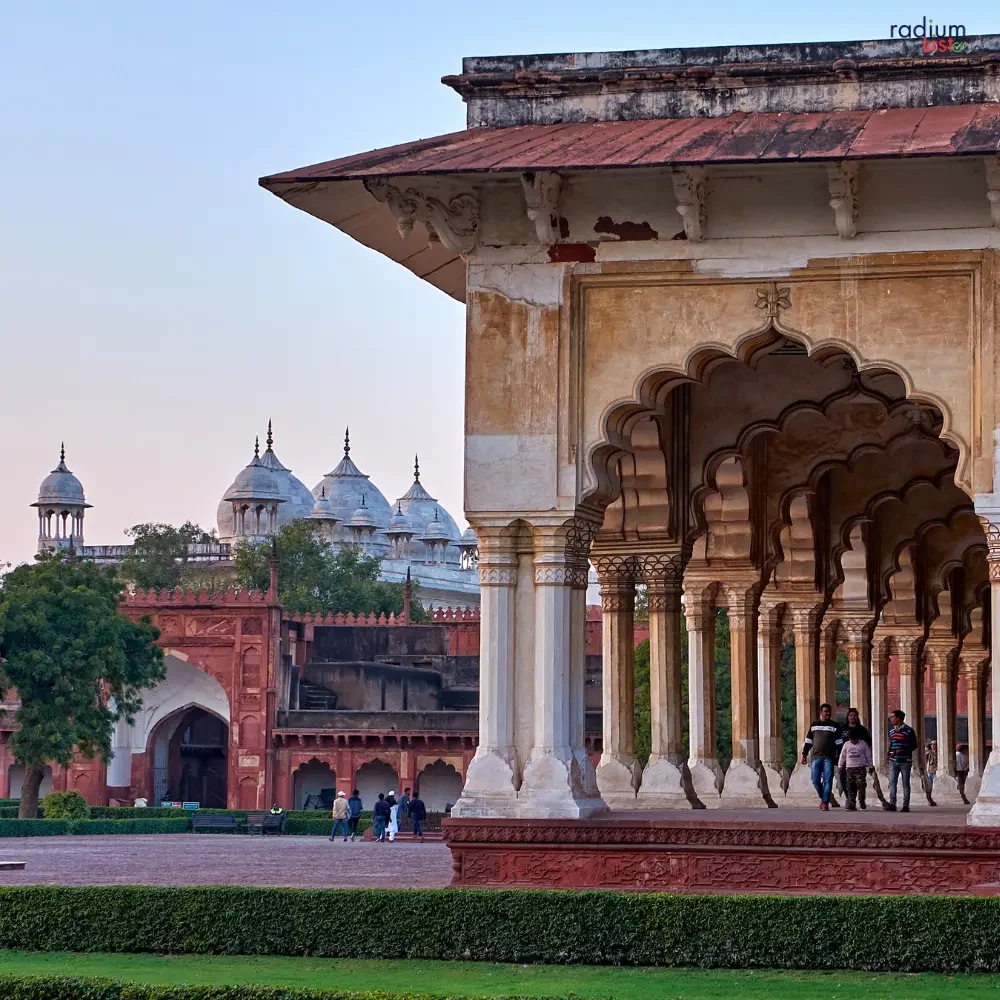
Here is the History of Agra Fort
Early Foundations: The history of Agra Fort dates back to the 11th century when the Rajput dynasty ruled the region. Sikandar Lodi, a Sultan of Delhi, is credited with laying the foundation of the original fort in the late 15th century. The fort was initially constructed using bricks, and it served as a military stronghold.
Mughal Era Transformation: The transformation of Agra Fort into the grand structure we see today began during the reign of Emperor Akbar, the third Mughal ruler of India. Akbar decided to make Agra the capital of his empire and extensively rebuilt the fort using red sandstone, giving it a distinctive Mughal architectural style.
Architectural Marvels: Emperor Akbar and his successors, Jahangir and Shah Jahan, contributed to the fort’s expansion and enhancement. Many magnificent structures were added, including the Diwan-i-Aam (Hall of Public Audience), Diwan-i-Khas (Hall of Private Audience), Jahangiri Mahal, Khas Mahal, Sheesh Mahal (Mirror Palace), and the iconic Musamman Burj, where his son Aurangzeb locked up Shah Jahan.
Historical Significance: Agra Fort witnessed significant historical events during the Mughal period. It was the residence of the Mughal emperors and served as an essential Political and Cultural center of the empire. It was also the Site of several power Struggles and palace intrigues within the Mughal dynasty.
British and Post-Independence Era: With the Decline of the Mughal Empire ,Agra Fort came under the Control of the British during the 18th Century. After India Gained Independence in 1947 ,the Fort was Preserved as a National Heritage site under the Archaeological Survey of India (ASI). Today ,Agra Fort is a UNESCO World Heritage Site and One of the most Visited Historical Monuments in India,Attracting Millions of tourists from around the world each year.
Taj Mahal
The Taj Mahal is the best illustration of Indo-Islamic design. Between 1631 and 1648, it was constructed at Agra, India, on the Yamuna River’s bank, as the tomb of Mumtaz Mahal ,Shah Jahan’s Persian wife. Ustad Ahmad Lahori created the design ,and it was constructed of white marble with Precious and semi-precious stone inlays. There are Four free-standing minarets all around the tomb. The main gate ,a mosque ,a guesthouse ,and surrounding gardens are also included in the complex.
Here is the History of Taj Mahal
Commissioned by Shah Jahan: The History of the Taj Mahal begins in 1632 when the Mughal Emperor Shah Jahan Commissioned the construction of this magnificent mausoleum in memory of his beloved wife ,Mumtaz Mahal ,who Passed away during Childbirth. The emperor was Deeply Saddened by her death and wanted to Create a grand monument to honor her Memory.
Construction and Skilled Artisans: Construction of the Taj Mahal commenced in the Same year on the Southern Bank of the Yamuna River in Agra ,India. Skilled artisans ,architects ,and craftsmen from various regions of the Mughal Empire and beyond were brought together to work on the masterpiece. The chief architect ,Ustad Ahmad Lahori, and other talented artists were responsible for turning Shah Jahan’s vision into reality.
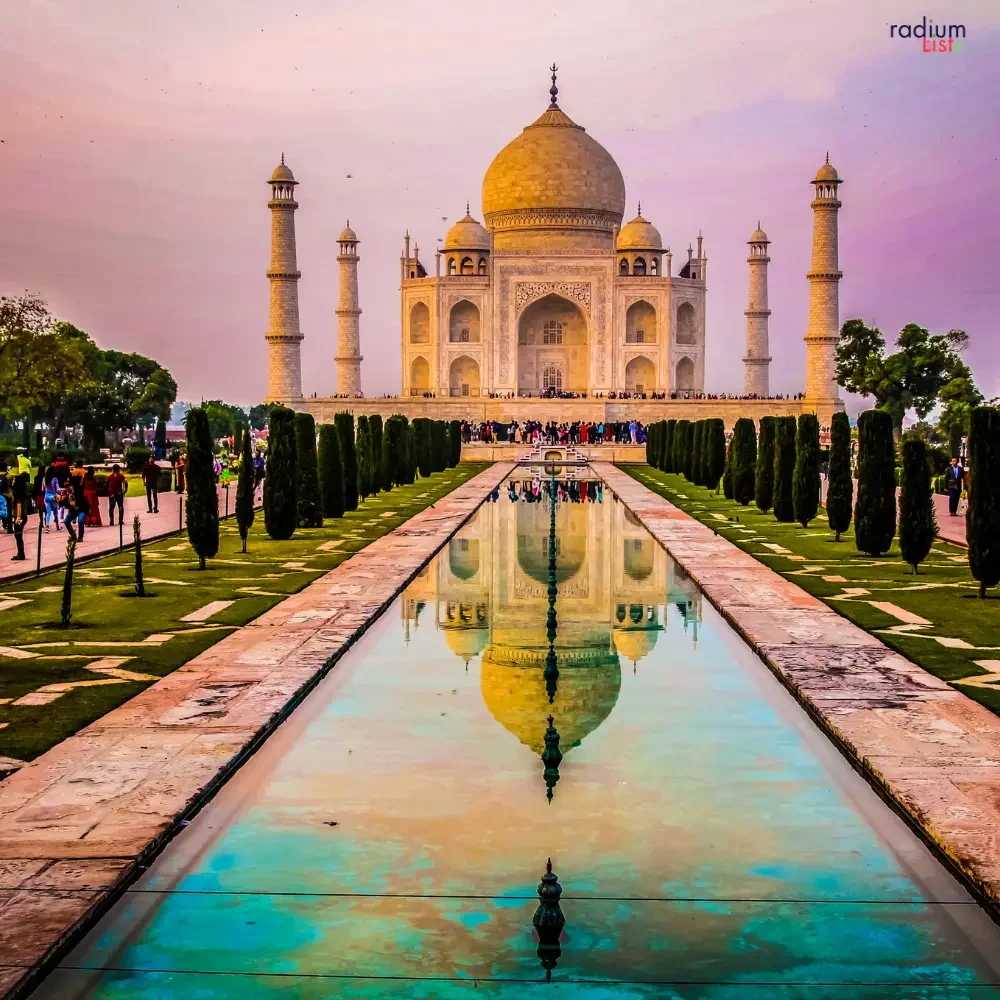
Years of Dedication: The Construction of the Taj Mahal Spanned over two decades ,with the monument completed in 1653. The Meticulous craftsmanship and attention to detail during this period resulted in the Taj Mahal’s breathtaking beauty and architectural brilliance ,making it one of the most iconic structures in the world.
Symbol of Eternal Love:The Taj Mahal’s design and layout symbolize the eternal love that Shah Jahan had for Mumtaz Mahal. The white marble structure with its intricate inlay work, elegant minarets, and the stunning central dome is a testament to the emperor’s grief and enduring love for his beloved wife. It is often regarded as one of the most romantic monuments ever built.
World Heritage Site and Global Icon: In Recognition of its Outstanding Cultural Significance and Architectural marvel ,the Taj Mahal was Designated as a UNESCO World Heritage Site in 1983. Today ,it stands as a Global Icon of love and a Symbol of India’s Rich cultural heritage, attracting millions of visitors from around the world who come to admire its timeless beauty and historical significance.
Sun Temple, Konark
One of the best examples of Kalinga Architecture is the Hindu temple ,Which Dates Back to the 13th century. It Resembles the chariot of the Sun deity Surya and is drawn by six horses. It has 24 Stone wheels that are Intricately carved and Ornamented on the exterior. Other Ornamental themes include Lions ,performers ,dancers ,and erotica.
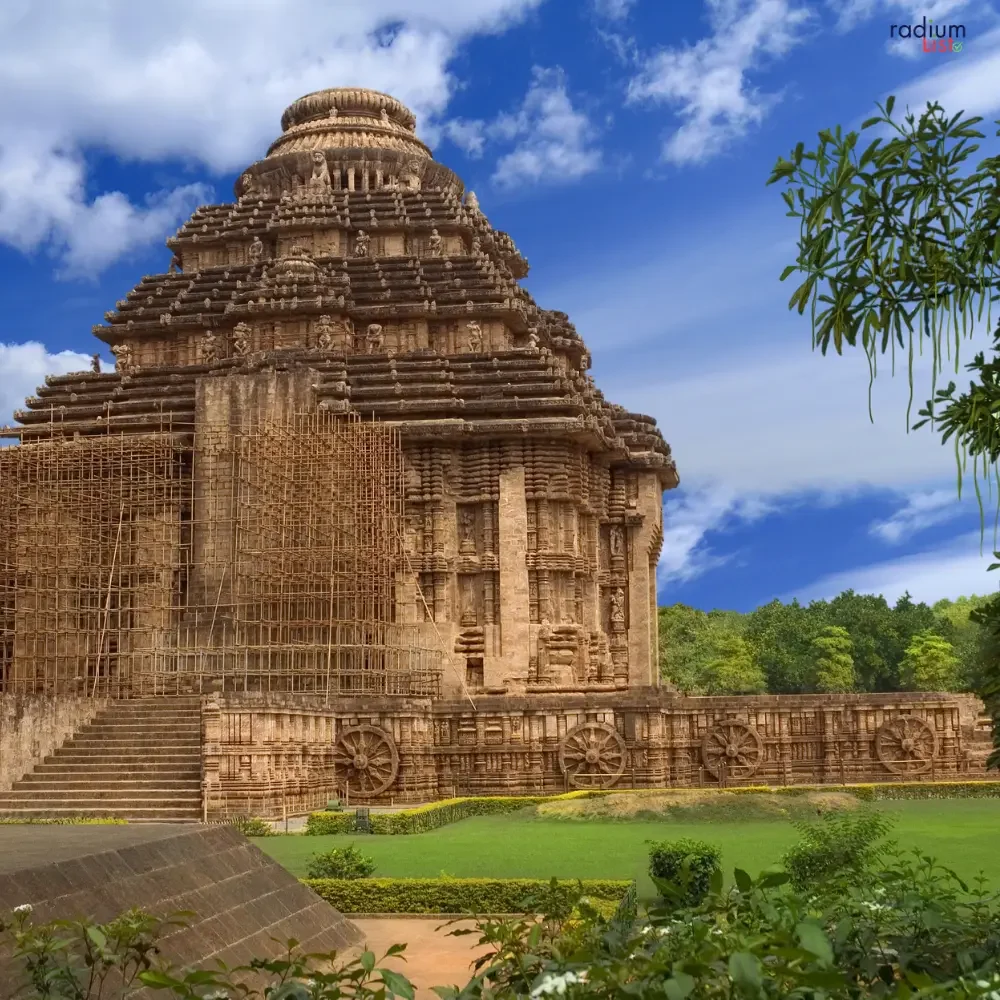
Here is the History of Sun Temple, Konark
Construction and Inspiration: The Sun Temple ,also known as the Konark Sun Temple ,is an architectural marvel located in Konark ,Odisha ,India. It was built during the reign of King Narasimhadeva I of the Eastern Ganga dynasty in the 13th century. The temple was Dedicated to the Hindu Sun God ,Surya ,and its Construction was Inspired by the Divine Chariot of Surya ,with 12 pairs of elaborately carved stone wheels symbolizing the movement of the sun.
Magnificent Architecture: The temple’s construction began in the mid-13th century and took around 12 years to complete. The architecture of the Sun Temple is a stunning blend of Kalinga (Odishan) style ,Nagara style ,and Dravidian influences. It stands as a testament to the architectural brilliance of ancient India and is renowned for its intricate stone carvings ,depicting various mythological and cultural themes.
Decline and Disrepair: After its completion ,the Sun Temple stood as a significant pilgrimage site and an architectural wonder. However ,over the centuries ,it faced natural calamities ,invasions ,and subsequent neglect. The temple Began to fall into disrepair ,and by the 17th Century ,parts of the Structure had Already Collapsed.
Rediscovery and Restoration: In the 19th and 20th centuries ,efforts were made to rediscover and restore the Sun Temple. Archaeological excavations and restoration projects were undertaken to preserve its remaining structures and restore its former glory. The temple complex ,along with the intricately carved sculptures ,attracts numerous tourists and historians from around the world.
UNESCO World Heritage Site: In recognition of its historical and cultural significance, the Sun Temple at Konark was designated as a UNESCO World Heritage Site in 1984. This prestigious recognition further highlighted its importance as a significant cultural heritage of India and a masterpiece of ancient architecture, contributing to its preservation and continued appreciation by generations to come.
Red Fort, Delhi
The Brahmaputra River’s floodplains are where Kaziranga is Situated. One of the top wildlife sanctuaries in the World ,it is home to the biggest population of Indian Rhinoceroses in the world (seen in the image) ,as well as tigers ,Asian Elephants ,wild water buffalo ,& Ganges river Dolphins. The wetlands are Crucial for the Migration of Several bird species.
Here is the History of Red Fort, Delhi
Construction during the Mughal Era (1638-1648): The History of the Red Fort in Delhi dates back to the Mughal period. It was commissioned by the fifth Mughal Emperor ,Shah Jahan ,in 1638 and completed around 1648. The fort was designed as the new imperial residence and served as the main seat of the Mughal government.
Architectural Marvel:The Red Fort ,also known as Lal Qila, is renowned for its grand architecture and red sandstone construction. It was designed by the renowned architect Ustad Ahmad Lahori ,who combined Mughal ,Persian ,and Indian architectural styles to create a masterpiece of engineering and artistry.
Center of Mughal Power and Cultural Significance: Throughout the Mughal era, the Red Fort was the center of Mughal power, witnessing several grand ceremonies, court events, and significant gatherings. It played a vital role in promoting Mughal culture ,arts ,and traditions.
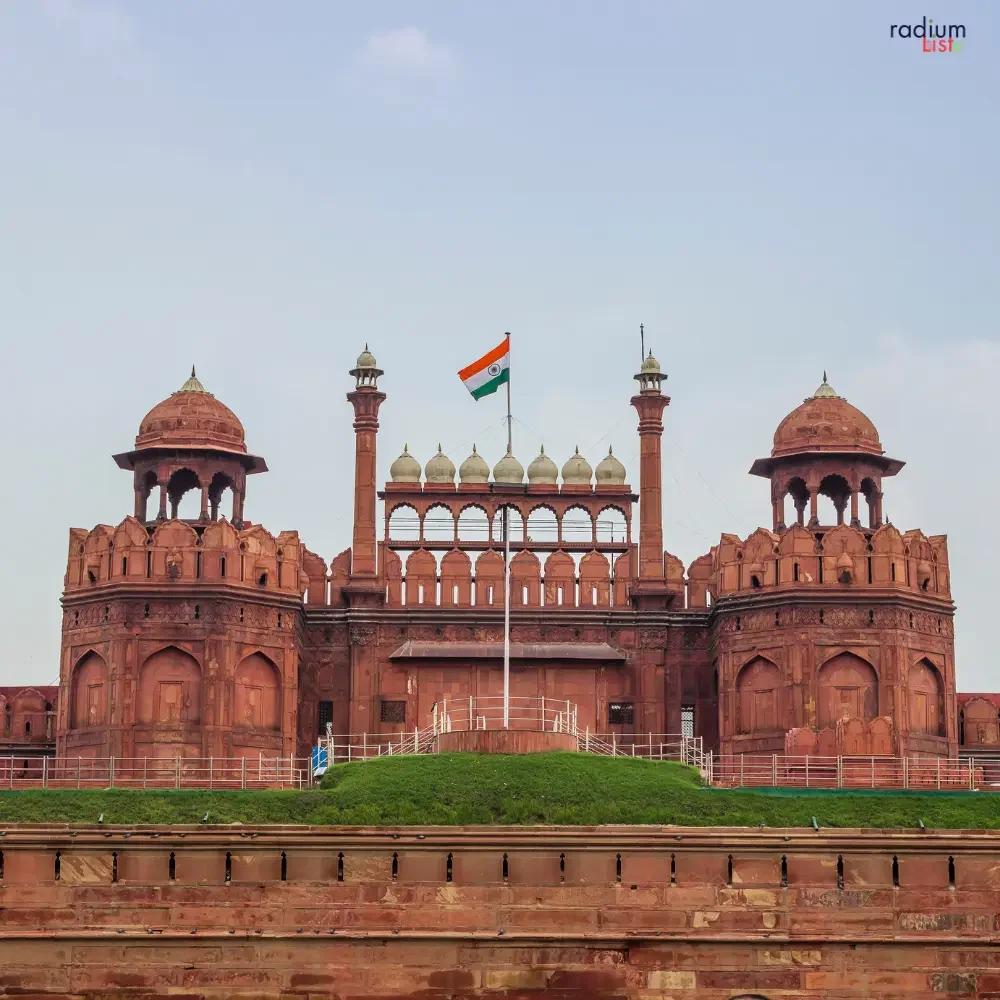
British Occupation and Post-Independence Era: The fortunes of the Red Fort changed with the advent of the British East India Company. After the Indian Rebellion of 1857 ,the British Captured Delhi and used the Fort as a Military Base. Following India’s independence in 1947 ,the Red Fort became a symbol of the nation’s sovereignty ,and on August 15 ,1947 ,it hosted the historic event of India’s first Prime Minister ,Jawaharlal Nehru ,hoisting the national flag and delivering the inaugural independence speech.
UNESCO World Heritage Site: Recognizing its Historical Significance and Architectural brilliance ,the Red Fort was designated as a UNESCO World Heritage Site in 2007. Today ,it remains a major tourist attraction in Delhi ,drawing visitors from all over the world to marvel at its splendid architecture and immerse themselves in the rich history of India’s Mughal era.
Qutub Minar, Delhi
Several early Islamic India structures from the 13th and 14th centuries ,when the Delhi Sultanate took control of the nation ,are included in the complex. They consist of the 72.5 m (238 ft) tall Qutb Minar (seen in the photo) ,the Alai Darwaza doorway ,the Quwwat-ul-Islam Mosque ,where some stone pillars from earlier Hindu temples were reused ,the Iron pillar ,as well as numerous tombs and other structures.
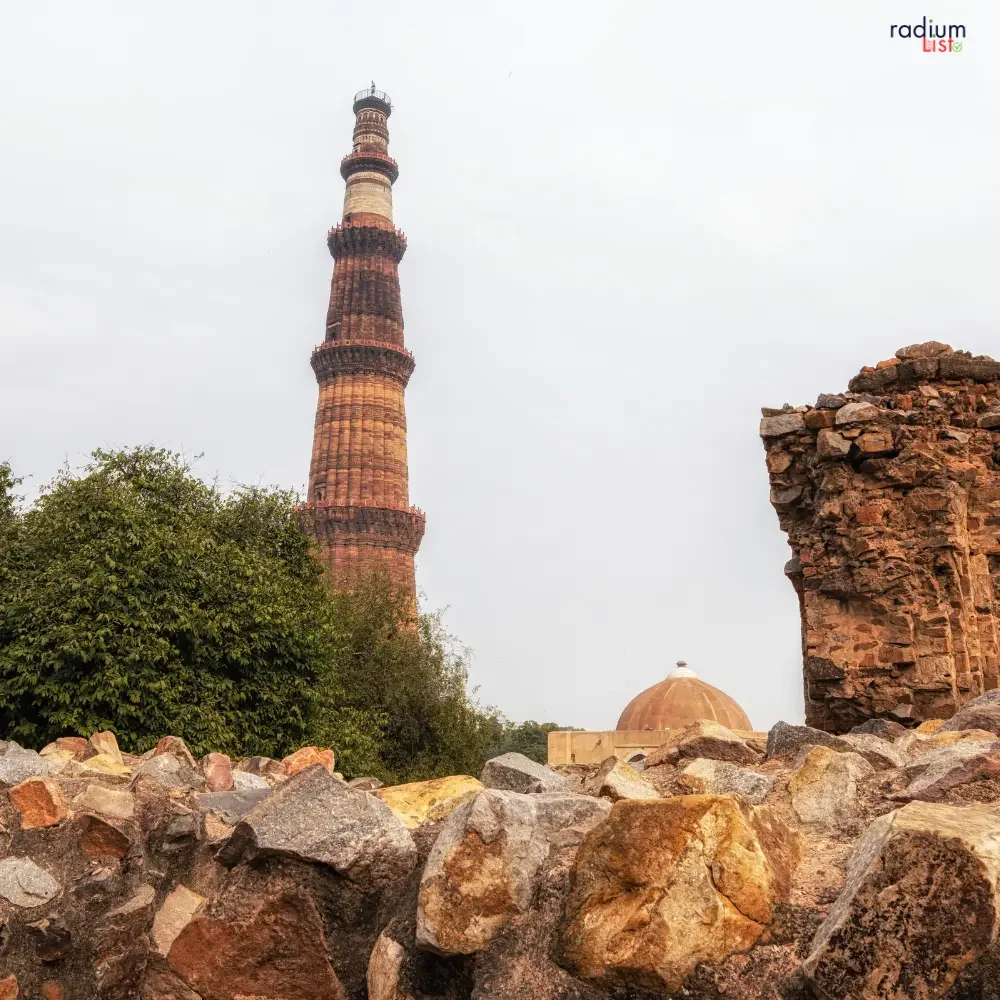
Here is the History of Qutub Minar, Delhi
Foundation and Construction (1192-1368): Qutub Minar, located in Delhi, India, has a rich history dating back to the early 12th century. Its construction began in 1192 by Qutb-ud-din Aibak, the founder of the Delhi Sultanate, immediately after the defeat of Delhi’s last Hindu ruler. He built the first three stories of the tower using red sandstone, incorporating intricate architectural elements.
Successive Additions (1220-1368): After Aibak’s death, his successors continued to expand and embellish the Qutub Minar. Iltutmish, the third Sultan of Delhi, added three more stories to the tower, now made of both red sandstone and marble, and introduced decorative calligraphy and motifs. Subsequent rulers like Firoz Shah Tughlaq and Sikandar Lodi made further contributions, enhancing the tower’s grandeur.
Destruction and Restoration (14th-19th centuries): During the course of its history, Qutub Minar faced several instances of damage due to natural disasters and invasions. Earthquakes in the 14th and 16th centuries caused significant destruction to the upper levels. However, each time the tower underwent repairs and renovations to restore its original splendor.
Impact of Lightning Strikes (19th century): In the 19th century, the Qutub Minar faced further challenges when it was struck by lightning, leading to the loss of the uppermost storey. The British during their rule in India conducted restoration works to preserve the monument and prevent further deterioration.
UNESCO World Heritage Site (1993): In recognition of its historical and architectural significance, Qutub Minar, along with other nearby monuments, was designated as a UNESCO World Heritage Site in 1993. Today, the Qutub Minar stands as a prominent symbol of India’s rich architectural heritage, drawing visitors from across the world to marvel at its beauty and learn about its remarkable history.
Red Fort Complex
Midway through the 17th century, under the reign of Shah Jahan ,the Red Fort was constructed. It is considered the Pinnacle of Mughal architecture and combines Timurid and Indo-Persian characteristics. Later palaces and Gardens in the region were greatly influenced by its Architecture. The Red Fort was also the scene of Historical Occurrences ,it was Captured by the British and largely repurposed ,and it was the location of the first Celebration of India’s freedom. It shows the Delhi Gate.
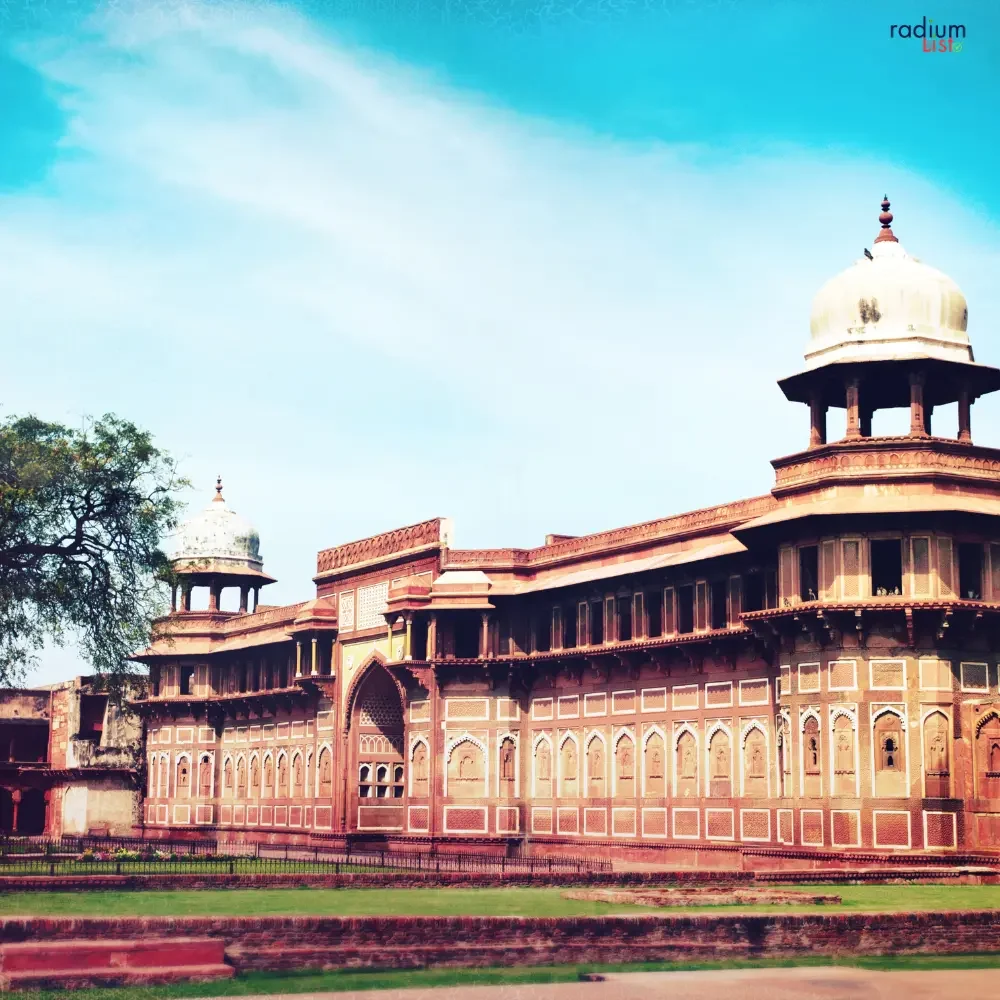
Here is the History of Red Fort, Delhi
Construction under Emperor Shah Jahan (1638-1648): The History of the Red Fort Complex dates back to the reign of Mughal Emperor Shah Jahan ,who commissioned its construction in 1638. The emperor wanted to establish a new capital for his empire ,shifting from Agra to Delhi. The construction took approximately ten years to complete ,and the Red Fort became the centerpiece of the new city, known as Shahjahanabad (now Old Delhi).
Architectural Marvel and Symbol of Power: Designed by Ustad Ahmad Lahori ,the Red Fort is renowned for its grand Mughal architecture. The massive sandstone walls ,intricate marble inlays ,and ornate buildings within the complex showcase the opulence and power of the Mughal Empire. The fort served as the residence of the Mughal emperors and their court ,as well as the ceremonial and administrative center of the empire.
Historical Significance during British Rule (19th-20th century): After the decline of the Mughal Empire ,the Red Fort saw various changes in its usage. During the British colonial rule, it lost its role as the Primary seat of power but continued to be a Symbol of India’s historical heritage. The British conducted various Renovations and added barracks and military structures within the complex.
Independence Day Celebrations: The Red Fort gained immense significance during India’s struggle for independence. It became the Venue for the iconic “Tryst with Destiny” speech delivered by India’s first Prime Minister ,Jawaharlal Nehru ,on August 15 ,1947 ,when India achieved independence from British rule. Since then, the Red Fort has been the site of India’s annual Independence Day celebrations, with the Prime Minister hoisting the national flag and addressing the nation.
UNESCO World Heritage Site (2007): Recognizing its Historical and Architectural Significance ,the Red Fort Complex was designated as a UNESCO World Heritage Site in 2007. Today ,it stands as a symbol of India’s rich cultural heritage and Continues to attract millions of visitors from around the world ,who marvel at its impressive architecture and soak in the historical significance of this iconic monument.
The Jantar Mantar, Jaipu
The most Important Historical Astronomical Observatory in India is the Jantar Mantar in Jaipur. It was created in the late Mughal era ,in the early 18th century. For Observations of the locations of Stars and planets using just the naked eye ,around 20 Astronomy devices were created and constructed. Additionally ,it Acted as a Hub where various scientific cultures could interact.
Here is the History of The Jantar Mantar, Jaipur
Astronomical Observatory Commissioned: The Jantar Mantar in Jaipur ,Rajasthan ,India ,is an iconic astronomical observatory built during the reign of Maharaja Sawai Jai Singh II. Construction Began in 1728 and was Completed in 1734. Maharaja Jai Singh II ,an avid astronomer and mathematician ,Commissioned the observatory to study celestial phenomena and improve astronomical accuracy.
Inspired by Earlier Observatories: Maharaja Jai Singh II was inspired by the works of renowned astronomers and mathematicians ,such as Ulugh Beg and Muhammad Ghaus. He Sought to create a series of Observatories Across different cities ,with Jaipur being one of them. The Jantar Mantar in Jaipur is the largest and most well-preserved of the five observatories built by him.
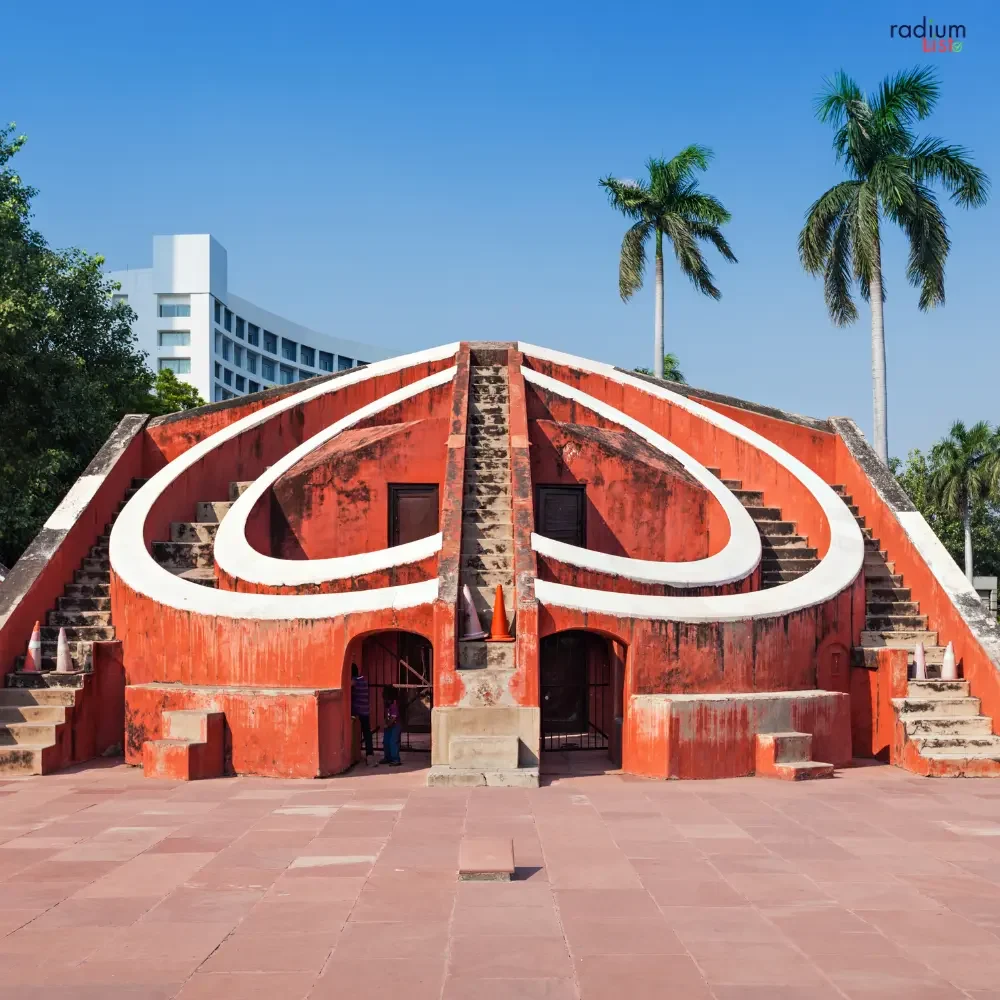
Architectural Marvel: The Jantar Mantar in Jaipur showcases a unique blend of Indian and Islamic architectural styles. It is designed with precision and accuracy, featuring a collection of 19 astronomical instruments. These instruments are made of stone ,brass ,and other materials ,and each serves a Specific astronomical purpose ,such as measuring time ,predicting eclipses ,and tracking celestial movements.
Restoration and UNESCO World Heritage Site: Over the centuries ,the Jantar Mantar underwent some deterioration. However ,in the 20th century ,Efforts were made to Restore and preserve this Historic site. In 2010 ,the Jantar Mantar in Jaipur ,along with other Jantar Mantar observatories in India, was designated as a UNESCO World Heritage Site in recognition of its Cultural significance and scientific contributions.
Tourist Attraction and Educational Center: Today ,the Jantar Mantar in Jaipur Stands as a Major Tourist Attraction and an Educational center ,offering visitors insights into the rich Astronomical Heritage of India. Tourists ,astronomers ,and history enthusiasts from all around the world visit this site to marvel at its architectural brilliance and learn about the ancient astronomical knowledge embedded within its structures.
Hill Forts of Rajasthan
These six forts were built by Rajput kings between the 8th and 18th centuries: Chittor Fort, Kumbhalgarh Fort, Ranthambore Fort, Gagron Fort, Amber Fort (shown), and Jaisalmer Fort. They were an inspiration for subsequent Maratha Empire designs and have an eclectic style with aspects of Mughal and Sultanate architecture. Their locations vary; for instance, Ranthambore is in a forest while Jaisalmer is in a desert.
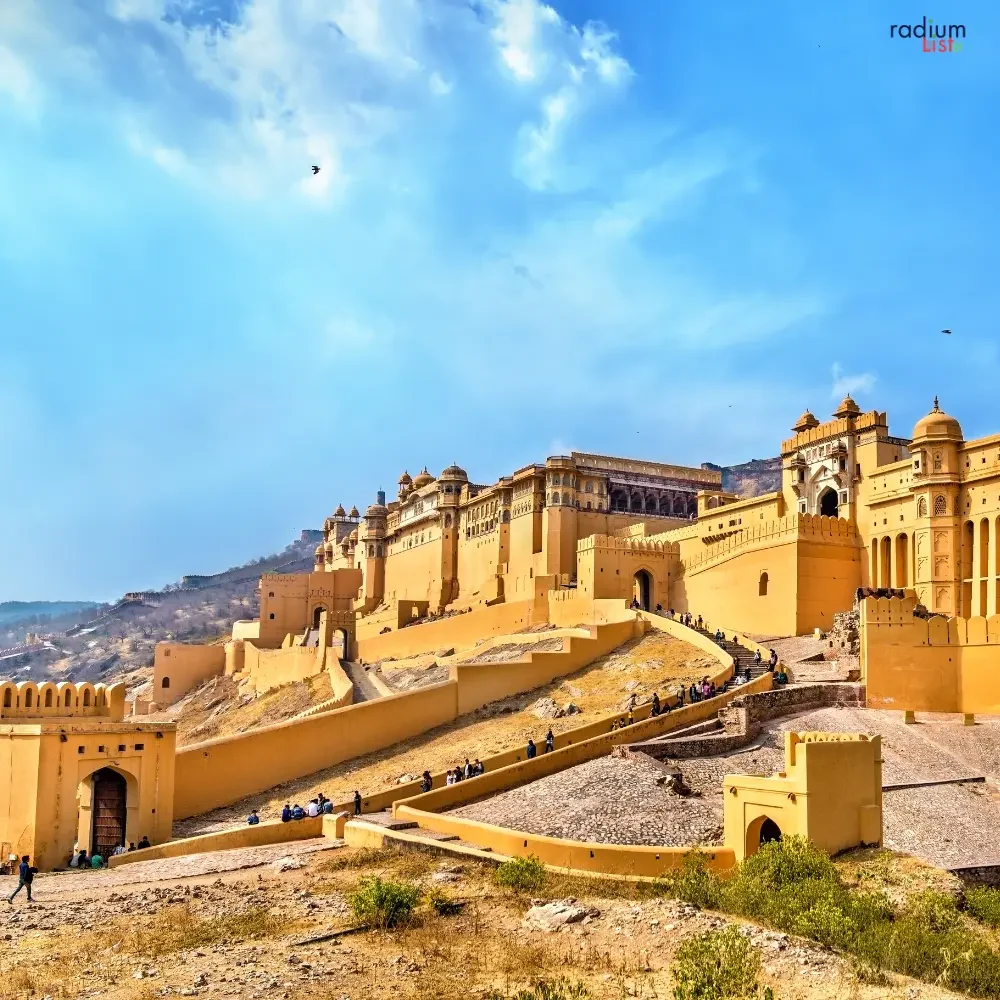
Here is the History of Hill Forts of Rajasthan
Ancient Origins: The History of the Hill Forts of Rajasthan dates back to ancient times ,with the construction of these forts beginning as early as the 8th century AD. The region’s geographical location and Strategic Importance prompted various rulers to build fortified structures atop hills to defend their territories and establish centers of power.
Rise of Rajput Clans: During the medieval period, the Rajput clans emerged as prominent rulers in Rajasthan. They further fortified existing structures and constructed new hill forts to safeguard their kingdoms from invasions and external threats. These forts also served as administrative centers and symbols of the rulers’ authority.
Architectural Splendor: The Hill Forts of Rajasthan showcase the rich architectural heritage of the Rajput era. Skilled artisans and craftsmen crafted intricate designs, carvings, and decorative elements that embellished the fortresses. Notable examples include Chittorgarh Fort, Kumbhalgarh Fort, and Ranthambore Fort, each reflecting the unique style of their respective ruling clans.
Battles and Conquests: Over the centuries, the Hill Forts witnessed numerous battles and conquests as rival clans and external forces sought to gain control over these strategically important strongholds. These forts witnessed many heroic tales of valor and sacrifice, becoming an integral part of Rajasthan’s folklore and history.
UNESCO World Heritage Status: In recognition of their cultural and historical significance, six Hill Forts of Rajasthan were collectively designated as UNESCO World Heritage Sites in 2013. The selected forts include Chittorgarh, Kumbhalgarh, Ranthambore, Gagron, Amber, and Jaisalmer. This prestigious status has helped in preserving and promoting the heritage of these forts for future generations. Today, they stand as iconic landmarks, attracting tourists from around the world and offering a glimpse into the glorious past of Rajasthan’s Rajput rulers.
